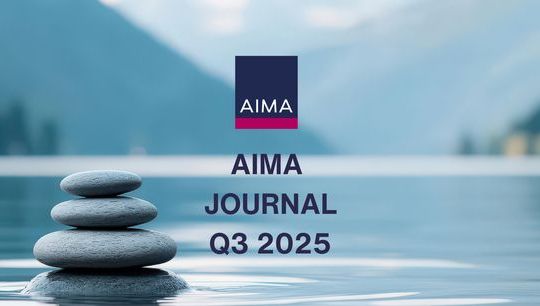Credit fund strategies across the liquidity spectrum
By James Oussedik, Counsel – Investment Funds Group, and Nicole Suignard, Associate – Investment Funds Group, Sidley Austin LLP
Published: 30 June 2015
The challenges faced by the banking sector post-2008 have created significant opportunities for alternative asset managers in a field formerly the domain of banks and other financial institutions. In particular, over recent times there has been a growing trend in managers seeking to access investments in less liquid credit markets, such as distressed and special situations debt, regulatory capital transactions and direct lending.
In this article, we consider some of the specific structuring, regulatory and tax issues which arise where managers, particularly those more familiar with liquid “hedge” type products, move into less liquid credit strategies.
Opportunities and product challenges
The table below summarises some of the main issues which managers need to get grips with in order to develop a product which is fit for purpose, both in terms of structure but also in terms of commercial and business issues.

The main focus of structuring must be to reconcile investor liquidity with the liquidity of underlying investments. In terms of the technology available to manage liquidity within the confines of a typical open-ended hedge fund, many managers will seek to include terms such as gates, side-pockets and/or partial lock-ups. However, since 2008 such liquidity constraints have been more open to challenge from investors: although there may be sound investment reasons for side-pocketing assets, doing so can be stigmatic for the manager unless investors’ perceptions are effectively managed, particularly where a significant proportion of the portfolio is affected.
As less liquid strategies such as direct lending and special situations debt have gained interest in the market over recent times, there has been a logical increase in the number of managers exploring means by which to lock-up investor capital for longer periods, beyond the reach of most open-ended hedge fund structures.
In order to deliver a product which ensures a prolonged lock-up and alignment of interests with investors, many managers have implemented limited partnership structures with features more commonly encountered in private equity-style funds and which are significantly different to those included in typical hedge products. Such terms commonly include: capital commitment and drawdown structures, economics based on a “waterfall” model for distributing realised investment proceeds, carried interest based on realised profit rather than net asset value, investor protection terms such as kick-out rights to remove the sponsor’s control of the fund in the event of “cause” type conduct or as a result of an resolved key man event.
Familiarity with the concepts, jargon and ethos behind terms historically more associated with the private equity world can be a major challenge for managers looking to utilise limited partnership technology in their fund offering.
Furthermore, building an illiquid fund structure will in most cases lead to a proliferation of structure and associated entity costs, giving rise to new corporate governance challenges and new operating models including investor reporting and valuation.
Distribution is another common challenge for managers more used to the liquid strategy world, for two main reasons: (i) often the investor team responsible for liquid fund allocations will not be the same as the team responsible for illiquid investment allocations, and (ii) credit, and in particular illiquid credit, can be difficult for investors to categorise in terms of traditional allocation buckets. Managers should seek to be on the front foot on these issues as early as possible in the marketing process.
Shadow banking and regulation
It remains the case that there is no harmonisation among EU member states of the regulation of originating, arranging or trading in loans. For market participants, including funds engaged in direct lending or secondary trading of loans, this can cause a great deal of complexity and, in some cases, uncertainty. Which specific activities are regulated varies between jurisdictions, as does the key issue of where the regulated activity is deemed to be taking place: the location of the lender, the arranger, the borrower, all three potentially? However this fragmentation of regulation could be perceived to be preferable in comparison to a uniformly restrictive EU regulatory regime. Although, as we discuss further below, that outcome may have receded somewhat, it cannot be ruled out entirely at this stage.
In the absence of a coherent European-level framework, the debate over the future regulation of shadow banking continues. Following numerous initiatives and consultations, the fundamental question remains as to whether, and to what extent, so-called “shadow banking” activities should be more vigorously regulated where they are carried out by non-financial institutions such as investment funds.

In March 2015, the European Banking Authority (EBA) issued a consultation (to close in June 2015) on guidelines on the criteria to set limits on EU institutions' exposures to shadow banking entities (SBEs). Under the draft guidelines, it is proposed that EU financial institutions will have to undertake a risk management exercise to limit their exposure to SBEs based on the “principal approach” (involving detailed analysis of exposure types and status of SBEs) or, failing that, the “fall-back approach” (a 25% limit on aggregate exposure to SBEs).
Similarly, the Financial Stability Board (FSB), responsible for monitoring and devising recommendations on the global financial system following a directional policy agreement at the G20 level, recently issued a position paper on shadow banking, including an outlook for 2015, adopting a two-pronged strategy: (i) a system-wide monitoring framework; and (ii) the development of policy measures. By the end of 2015, the FSB is looking to consolidate a number of peer reviews (including those conducted by IOSCO to monitor the progress to date with respect to shadow banking regulation) and report to the G20 in November 2015.
Alongside these initiatives, a key part of the European Commission Green Paper on the Capital Markets Union (CMU) concerns improving access to the capital markets for small and medium enterprises, which may provide a policy background for a more liberal approach to shadow banking activities than previously anticipated. The Commission is looking to put together the building blocks for the CMU by 2019.
In addition, certain jurisdictions such as Luxembourg, and more recently Germany, appear to have loosened the regulatory grip on certain types of lending activities to non-retail borrowers. A further sign perhaps that there is reason to be cautiously optimistic that a workable regulatory environment may emanate at EU level in the near future.
Tax considerations
Tax structuring for credit funds with a European focus will often require the establishment of “under the fund” investment vehicles, with the intention of accessing double tax treaties where available, as well as enhancing the limitation of potential liabilities in the fund structure. Such vehicles are commonly established in Ireland (often as section 110 companies) and in Luxembourg (typically using a S.à r.l.).
In recent times there has been an increase in the scrutiny placed on the substance of such investment vehicles and on their ability to obtain relief under applicable double tax treaties; arising both due to local regulatory requirements, and local tax authorities raising concerns as to whether such vehicles have beneficial ownership of the underlying interest payments. Furthermore, the OECD last September published seven recommendations pursuant to its Base Erosion and Profit Shifting initiative. Two of the suggested actions may limit the ability of credit funds to effectively utilise such investment vehicles. Action 2 concerns the use of hybrid instruments in funding structures, where an instrument may be treated as debt in one jurisdiction, but as equity in another. It is common for Luxembourg structures to make use of hybrid instruments in order to minimise overall tax leakage. Action 6 seeks to target the use of entities in structures with the intention of gaining the benefit of double tax treaties (i.e. an investment vehicle in Luxembourg) which would not otherwise be available to the ultimate investing entity (i.e. the main fund entity). However, it should be noted that the application of Action 6 to investment fund structures remains subject to ongoing discussion. Managers currently using, or considering, investment vehicle structures should monitor implementation of these proposals and discuss with their tax advisers their potential effect.
In the US, safe harbours generally afford protection to managers engaged in the secondary trading of loans from the risk of being deemed to be engaged in a US trade or business. However such provisions do not generally apply to loan origination activities. Unless tax structuring is carefully considered, this can result in non-US investors bearing a 35% US tax on all income deemed to be effectively connected with US loan origination activities, as well as having to file US tax returns. In addition, if the loan origination employs leverage to enhance returns, US tax-exempt investors will be at risk of earning imputed “unrelated business taxable income” which will cause unwanted issues, including the need to file tax returns. Structuring solutions can generally be designed to mitigate both these issues.
Conclusion
Whilst the scale of the opportunity in European credit markets looks set to continue to attract alternative investment managers, there are key commercial and legal issues to understand, particularly where longer lock-up vehicles are required. Accessing advisers who can provide a deep understanding of fund terms, together with insights into changes in the regulatory and tax climate, is a crucial part of a successful product launch in this fast evolving space.




